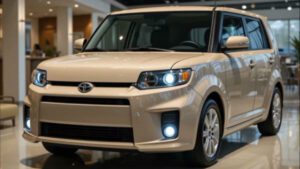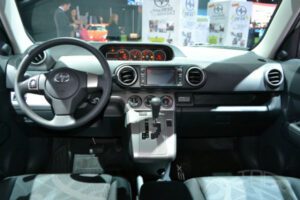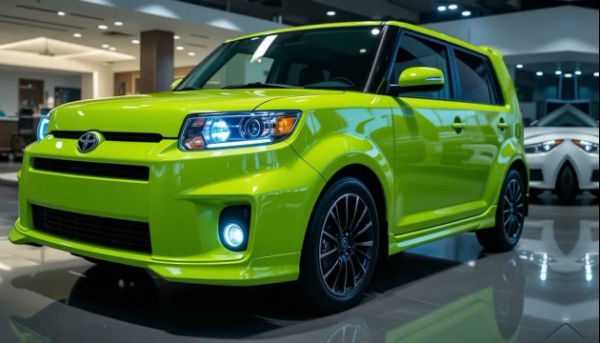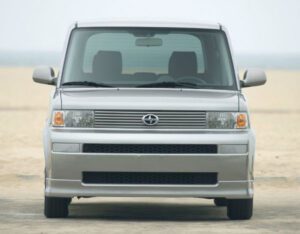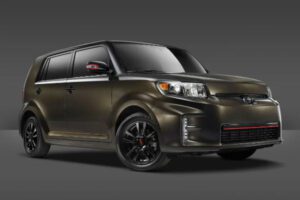2026 Scion xB
The 2026 Scion xB is a compact car sold by Toyota’s youth-focused Scion brand. The 2026 Scion xB is known for its unique boxy styling, surprisingly spacious and versatile interior, and extensive customization options. Among potential buyers interested in a vehicle with similar features to the Scion xB, other modern alternatives that offer a practical hatchback design include the Toyota Corolla Hatchback, Hyundai Kona, and Kia Soul. The Kia Soul is best known for its “box on wheels” design, making it a successor to the Scion xB’s styling.
The first-generation Scion xB was a rebadged Toyota bB, known for its distinctive JDM (Japanese Domestic Market) aesthetics and performance. The second generation moved the larger Scion xB into a different niche and aimed at a broader audience, retaining its angular stance but adding more power and features. The Scion xB was eventually discontinued after the 2015 model year as part of Toyota’s decision to phase out the Scion brand in 2016. Toyota is discontinuing the Scion brand and will absorb the FR-S and iM models into its lineup.
2026 Scion xB : Interior
Inside, the Scion xB‘s interior is defined by its boxy design, which translates to a spacious and functional cabin for a vehicle of its size. It offers ample headroom and legroom for front and rear passengers, a feature that has even led to its use as a taxi in some cities. The design philosophy is simple and functional, with the layout incorporating a number of small storage options, such as bins, trays, and a convenient cubby under the rear seat. A notable and often divisive design feature is the centrally located instrument cluster, which some find annoying as it is not in the driver’s direct line of sight, although the digital speedometer readout is helpful. The steering wheel on later models is tilt-and-telescopic, which helps to provide a comfortable driving position.
While the cabin is top-notch in terms of materials, the quality of materials is average for its price, with plenty of durable, durable plastics. These are functional and to be expected in this class of vehicle, though they may not impress those looking for a premium feel. The real strength of the xB’s interior is its versatility and cargo capacity. The 60/40-split rear seats fold down almost flat, opening up an impressive 70 cubic feet of cargo space, which rivals that of the best small SUVs. Even with the rear seats in use, there’s plenty of cargo space for everyday needs. Easy-to-use dashboard controls and available modern audio systems, including Bluetooth and USB connectivity in later years, add to the practical and user-friendly nature of the xB’s interior.
2026 Scion xB : Engine
The Scion xB was offered with two different engines across its two generations. The first-generation xB (2004-2006) had a 1.5-liter, 4-cylinder engine, while the second-generation model (2008-2015) had a larger and more powerful 2.4-liter, 4-cylinder engine. Both were inline four-cylinder gasoline engines featuring Toyota’s VVT-i (Variable Valve Timing with intelligence) technology.
The first-generation xB was powered by a 1.5-liter 1NZ-FE engine, producing 108 horsepower and 105 pound-feet of torque. This engine was mated to a 5-speed manual or 4-speed automatic transmission. In the second generation, the xB was upgraded with a 2.4-liter 2AZ-FE engine, a significant upgrade that brought 158 horsepower and 162 lb-ft of torque. This larger engine provided strong acceleration and was available with a 5-speed manual or 4-speed automatic transmission.
2026 Scion xB : Safety
The safety performance of the Scion xB varies by generation, but the second generation offered solid protection for its time, earning an IIHS Top Safety Pick award for six consecutive years. This generation received a top rating of good from the IIHS in frontal offset, side impact, and roof-strength tests, and came in average for safety features, including stability control, traction control, anti-lock brakes, front-seat side airbags, and full-length side airbags. However, the first generation was given a poor rating in side impact tests because it did not offer side airbags, which have been made standard on all later models. While the latest models performed well in the initial IIHS crash tests, they received a “Shock” rating in the small overlap frontal crash test, indicating that driver survival was not well maintained in that particular scenario.
